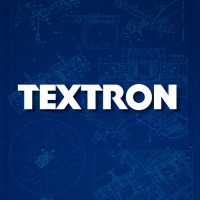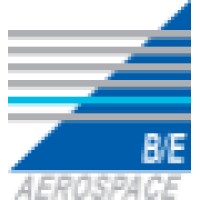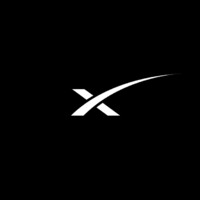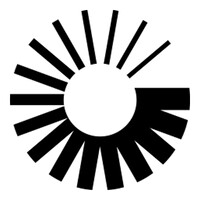Company Cyber Security Posture
NANA
NA Company Details
NA
NA
NA
NA
NA
NA
Scan still pending
NA
NA
Between 200 and 800
This score is AI-generated and less favored by cyber insurers, who prefer the TPRM score.
 NA Global Score
NA Global Score.png)

Company Scoring based on AI Models
| Model Name | Date | Description | Current Score Difference | Score |
|---|---|---|---|---|
| AVERAGE-Industry | 03-12-2025 | This score represents the average cybersecurity rating of companies already scanned within the same industry. It provides a benchmark to compare an individual company's security posture against its industry peers. | N/A | Between 200 and 800 |
Company Cyber Security News & History
| Entity | Type | Severity | Impact | Seen | Url ID | Details | View |
|---|
Company Subsidiaries

NA
Access Data Using Our API

Get company history
.png)
NA Cyber Security News
Stepping Through the Door: Taiwan’s Space Future in Motion (2)
Space sustainability represents a critical frontier where Taiwan can make significant contributions. The country's expertise in precision ...
IAF Announces 2025 Young Space Leaders
The International Astronautical Federation (IAF) has announced the 2025 IAF Young Space Leaders. They are Hannah Ashford, co-founder and ...
VERSES Names Renowned AI and Public Sector Leader Dr. David Bray to Chair Strategic Advisory Council
VERSES Names Renowned AI and Public Sector Leader Dr. David Bray to Chair Strategic Advisory Council. By GlobeNewswire.
Governor Abbott Launches Texas Space Commission
Governor Abbott Launches Texas Space Commission · Gwen Griffin of Houston is the chief executive officer of the Griffin Communications Group.
NATO Review - Protecting our critical satellite infrastructure: the importance of space-based infrastructure to humanity and its status within NATO
This article addressed the legal and policy issues posed by the growing threat of counterspace capabilities and outlined avenues the Alliance may wish to take.
National Security Collaboration Center at UTSA convenes its first Advisory Council
NOVEMBER 18, 2021 — The UTSA National Security Collaboration Center (NSCC) has created its first Advisory Council. The group—comprised of accomplished ...
Global space traffic management measures to improve the safety and sustainability of outer space
Relying on space being “big” is no longer an option. More than 3,000 satellites operate in Earth orbit along with hundreds of thousands of ...
Space Innovation in Zimbabwe and Beyond: Interview with Ruvimbo Samanga
"I think Africa has a real opportunity to show what a proactive public-oriented space program looks like."
AI Space Race: Regulations Required
Artificial intelligence promises to revolutionize outer space activities — if the correct rules are set. Data and satellites will be key.

NA Similar Companies

Bombardier
Bombardier is a global leader in aviation, focused on designing, manufacturing, and servicing the world's most exceptional business jets. Bombardier’s Challenger and Global aircraft families are renowned for their cutting-edge innovation, cabin design, performance, and reliability. Bombardier has a

Textron
Textron Inc. is a multi-industry company that leverages its global network of aircraft, defense, industrial and finance businesses to provide customers with innovative solutions and services. Textron is known around the world for its powerful brands such as Bell, Cessna, Beechcraft, Pipistrel, Jacob

Blue Origin
We are building a road to space for the benefit of Earth, humanity’s blue origin. Our team is focused on radically reducing the cost of access to space and harnessing its vast resources while mobilizing future generations to realize this mission. Blue Origin builds reusable rocket engines, launch ve

B/E Aerospace
B/E Aerospace is now part of Rockwell Collins. With the acquisition of B/E Aerospace in April 2017, Rockwell Collins is now a world leader in designing, developing and manufacturing cabin interior products and services that deliver innovation, reliability and efficiency. Our broad range of offeri

SpaceX
SpaceX designs, manufactures and launches the world’s most advanced rockets and spacecraft. The company was founded in 2002 by Elon Musk to revolutionize space transportation, with the ultimate goal of making life multiplanetary. SpaceX has gained worldwide attention for a series of historic mil

Pratt & Whitney
Pratt & Whitney, an RTX business, is a global leader in propulsion systems, powering the most advanced aircraft in the world, and we are shaping the future of aviation. Our engines help connect people, grow economies and defend freedom. Our customers depend on us to get where they’re going and back

Frequently Asked Questions
Explore insights on cybersecurity incidents, risk posture, and Rankiteo's assessments.
NA CyberSecurity History Information
How many cyber incidents has NA faced?
Total Incidents: According to Rankiteo, NA has faced 0 incidents in the past.
What types of cybersecurity incidents have occurred at NA?
Incident Types: The types of cybersecurity incidents that have occurred include .
Additional Questions
What Do We Measure?
















Every week, Rankiteo analyzes billions of signals to give organizations a sharper, faster view of emerging risks. With deeper, more actionable intelligence at their fingertips, security teams can outpace threat actors, respond instantly to Zero-Day attacks, and dramatically shrink their risk exposure window.
These are some of the factors we use to calculate the overall score:
Identify exposed access points, detect misconfigured SSL certificates, and uncover vulnerabilities across the network infrastructure.
Gain visibility into the software components used within an organization to detect vulnerabilities, manage risk, and ensure supply chain security.
Monitor and manage all IT assets and their configurations to ensure accurate, real-time visibility across the company's technology environment.
Leverage real-time insights on active threats, malware campaigns, and emerging vulnerabilities to proactively defend against evolving cyberattacks.




